A water feeder for birds that becomes a water feeder for bees / Poidełko dla ptaków, które staje się poidełkiem dla pszczół
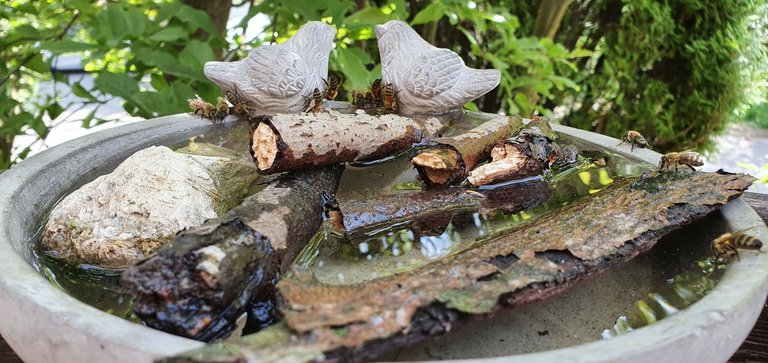
During the weekend I was at my parents' house and I saw a water feeder for birds on the terrace that my mother had put up there a long time ago. Only now, instead of birds, bees started to fly to it... and unfortunately they were drowning. I decided to do something and read how to make a water feeder for bees, and then rearranged the traditional water feeder a bit.
W weekend byłam u rodziców i zobaczyłam na tarasie poidełko, które moja mama już dawno tam wystawiła. Tylko, że teraz zamiast ptaków zaczęły do niego przylatywać pszczoły... i niestety się topiły. Postanowiłam zadziałać i poczytałam jak zrobić poidełko dla owadów, a następnie nieco przearanżowałam tradycyjne poidło.
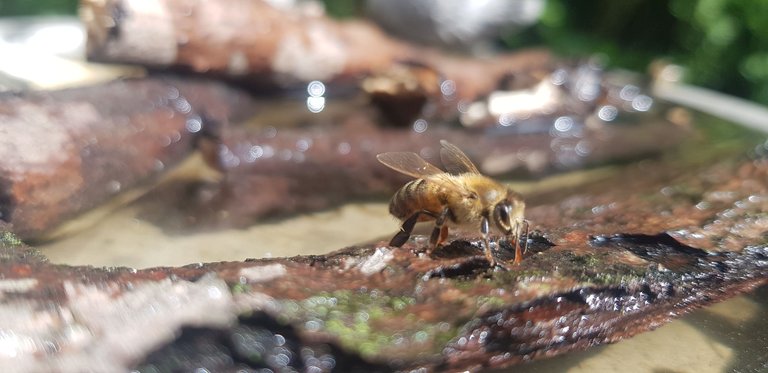
A lot of bees came there and it can be said that they took over the water feeder, because despite the heat, I did not see any birds coming there, and there had been a lot of them before. I really like bees, their buzzing calms me down. I am not afraid of them, unlike wasps and hornets. Bees are very useful and hardworking, it is worth helping and protecting them.
Pszczół przylatywało tam mnóstwo i można powiedzieć, że przejęły to poidło dla siebie, bo mimo upałów nie widziałam, żeby przylatywały tam ptaki, a wcześniej było ich dużo. Bardzo lubię pszczoły, ich bzyczenie mnie uspokaja. Nie boję się ich, w przeciwieństwie do os i szerszeni. Pszczoły są bardzo pożyteczne i pracowite, warto im pomagać i je chronić.
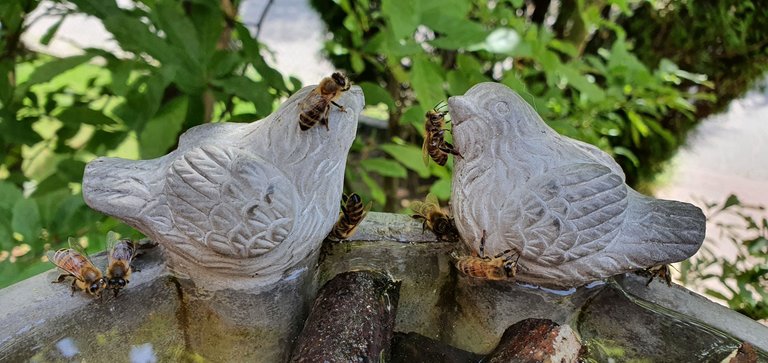
What were the changes to the water feeder? First of all, I poured less water, put branches and tree bark and stone into it. Unfortunately, I couldn't find any moss in the area, which is a very important element of the water feeder. What you see now is the water feeder in the process of transformation, with the moss going to be complete.
Na czym polegały zmiany w poidle? Przede wszystkim wlałam mniej wody, włożyłam do niego gałęzie i korę z drzew oraz kamień. Niestety nie mogłam znaleźć w okolicy żadnego mchu, a jest to bardzo ważny element poidła. To co teraz widzicie to poidło w trakcie transformacji, z mchem będzie kompletne.
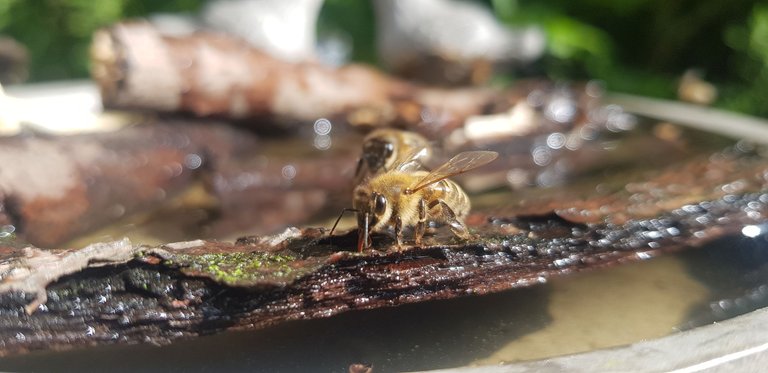
Insects, including bees, do not need to drink the water directly. They can drink it from wet sticks, tree bark, moss. This is safer for them. There is no risk that they will fall into a container of water and drown.
Owady, w tym pszczoły nie muszą pić wody bezpośrednio. Mogą ją sobie spijać z zamoczonych patyków, z kory drzew, z mchu. Tak jest dla nich bezpieczniej. Nie ma ryzyka, że wpadną do pojemnika z wodą i się utopią.
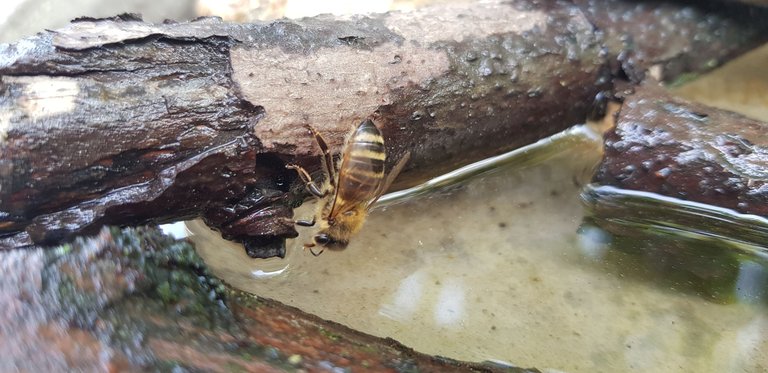
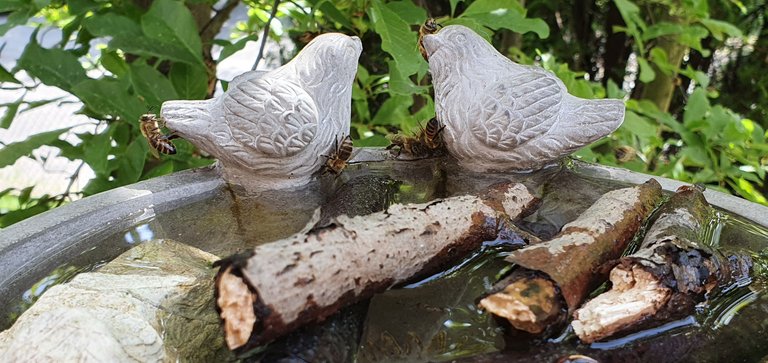
This is what the drinker looked like earlier. Much more beautiful without these sticks, but unfortunately it was dangerous for the insects.
Tak wyglądało poidełko wcześniej. O wiele ładniej bez tych patyków, ale niestety było niebezpieczne dla owadów.
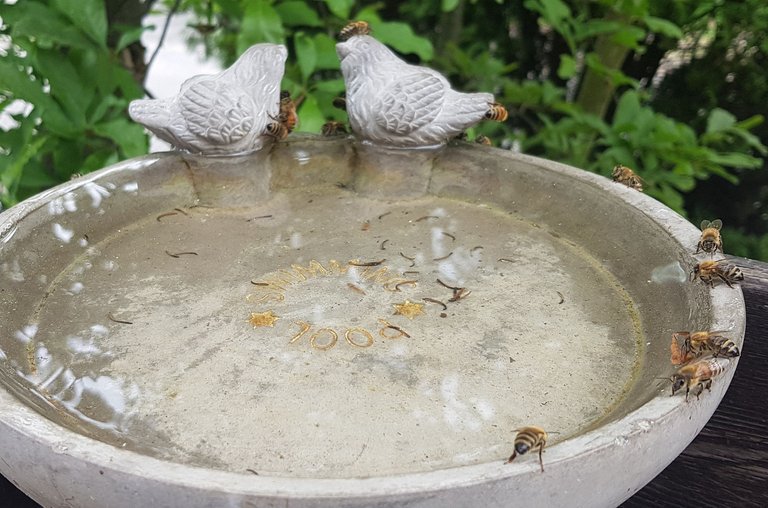
I noticed that the bees often drank in a row, one next to the other. It looked cool.
Zauważyłam, że pszczoły często piły sobie w rządku, jedna koło drugiej. Zabawnie to wyglądało.
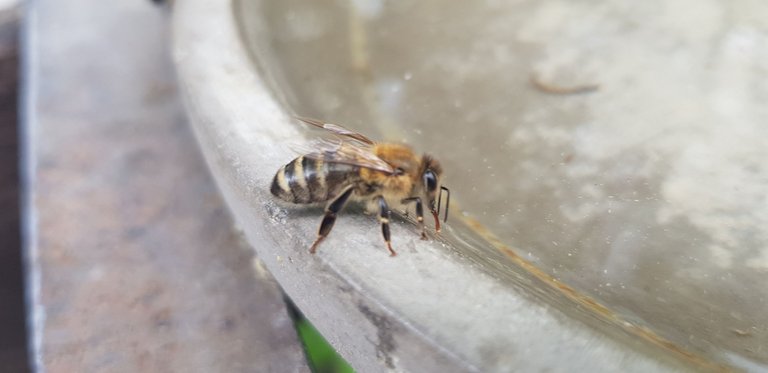
Ultimately, there should be very little water in the water feeder - a few millimeters. I will also put moss, sticks and expanded clay into it. Expanded clay absorbs water and the bees can drink water from it later.
Docelowo wody w poidle ma być bardzo mało - kilka mm. Włożę też do niego mech, patyki i keramzyt. Kermazyt nasiąka wodą i pszczoły mogą później pić z niego wodę.

great pictures
We appreciate your work and your post has been manually curated by zoology team (oscurity,nelinoeva) on behalf of Amazing Nature Community. Keep up the good work!
Beauty!
Without bees the world would not be as it is!
We appreciate your work and your post was manually curated by @none! from the DNA team!
Reach us on Discord to learn more about the project!